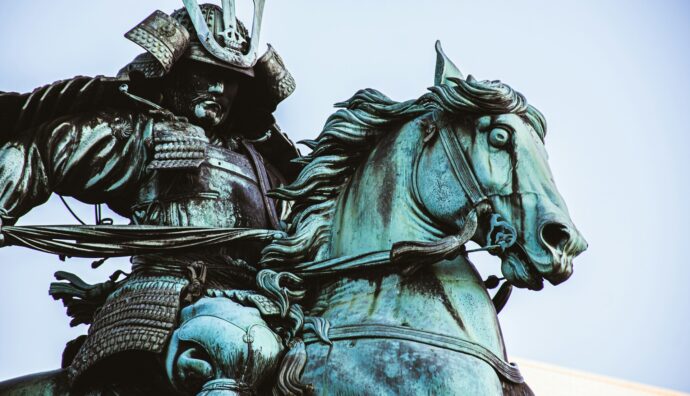In the first of his books, Morihiro Saito tells of when he presented himself to Morihei Ueshiba to be accepted as his student:
Sensei stared at me and asked, “Why do you want to learn Aikido?” When I replied that I’d like to learn if he would teach me, he asked, “Do you know what Aikido is?” There was no way I could have known what aikido was. Then Sensei added, “I’ll teach you how to serve society and people with this martial art.”
I didn’t have the least idea that a martial art could serve society and people. I just wanted to become strong. Now I understand, but at that time I had no idea of what he was talking about. When he said, “for the benefit of society and people,” I wondered how a martial art could serve that purpose, but as I was eager to be accepted, I reluctantly answered, “Yes, I understand.” (Morihiro Saito, Takemusu Aikido, Background and Basics Vol. 1)
It seems to be there, in the scene. We have all felt, at least once, like Morihiro Saito. Faced with something or someone that attracts us, without knowing the slightest reason why, without knowing anything about what is the real essence of what we will do.
And, above all, without the slightest idea of how something that has to do with martial arts can somehow serve society and the people who are part of it.
All this despite the digressions on the verb saburau (侍う), from which the word samurai (侍) derives and which actually means to serve. Isn’t it ironic that a full-blooded Japanese, born and raised in the countryside still rooted in feudal culture, couldn’t understand how a martial art could…serve?
Such ideas were going through our heads when, a few days ago, we participated in the technical seminar of the MGA (Italian) Global Self-Defense Method. A day spent together with almost a hundred technicians and teachers of Judo, Karate, Greco-Roman Wrestling, Ju Jutsu and, obviously, us representing Aikido.
On the topic of self-protection and personal defense, many needs converge, brought by as many subjects. There are defense professionals (Army, Law Enforcement, security operators), trainers of healthcare workers and volunteers, collaborators of anti-violence shelters, corporate coachs, educators in projects to combat gender related violence, school operators committed against bullying, teachers of female courses…
It becomes clearer, in such contexts, how martial arts can serve society and people.
Society needs tools to deal with conflict situations that are generated by and in turn generate episodes of violence of a thousand forms. Yet these tools are not primarily combat methods.
The application of a technique, the physical resolution of a conflict must be avoided at all costs. And, in fact, as the teachers underlined, the statistics say that fortunately very few have suffered physical aggression in their lives and even fewer had a weapon pointed at them.
The study of conflict according to the grammar of a martial discipline helps to understand its structure, motivations and dynamics and therefore allows us to greatly strengthen all those prevention mechanisms that avoid escalation.
It could therefore be said that martial art serves society because it serves the person who practices it and who spreads its attitudinal setting. The change in personal perspective is something that contaminates, positively impacts the surrounding environment and therefore, serving oneself is the prerequisite for serving others.
Then it is obvious that the response to an excessive use of force and to a criminal act requires adequate preparation of professionals, both at technical and attitudinal level. And this is also a way to serve society and people.
But what if the physical, technical and attitudinal training that is received in a good course of a martial discipline or self-defense was used to strengthen the ability to psychologically manipulate oneself and others? Isn’t it the very same first motivation of the young Morihiro? Simply becoming…strong?
What if a certain habit of pushing techniques to exasperation and closing the pin down like maniacs led to the habit of coercion?
Then, in this case, the martial art would serve something else to the person. Exactly as a slave served something to his master. With all the problems that arise from this mutual dependence.
Without the art that serves some injection of ego to you, who are you? And for that reason: how many of us identify themselves with their belt, rank, qualification and role we have or think we have?
And when, for one reason or another, the slave who served you rebels and, faced with a new situation, faced with a person prepared in a better or different way, faced with the inexorable advancement of age, all the technique you needed disappears and abandons you…What will you do?
If you serve something “to” society, it’s over, because by making everything you are available to its whims and fashions and, due to the way the world is hardwired, as soon as it uses you, it discards you.
If you serve “the” society, you are part of it as a cell that always tries to give its best. You don’t seek your own gain or its approval but you recognize society for what it is: a living organism made of billions of cells identical to you in every way.
And that is where, taught well and practiced even better, a martial art can contribute to serve.
Disclaimer: picture by Ryunosuke Kikuno from Unsplash

